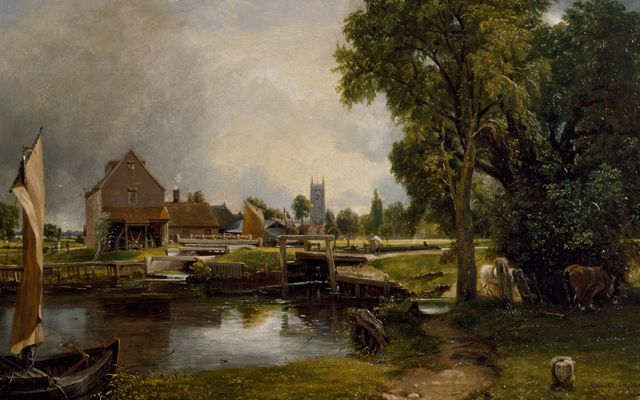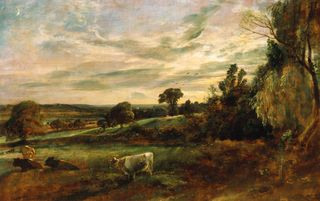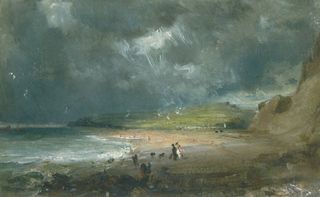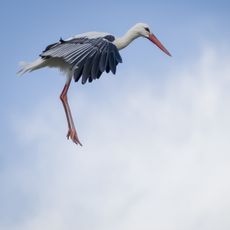Exhibition review: Constable at the V&A
This new V&A exhibition proves what a giant of European art Constable was, says Martin Gayford


Above: Dedham Lock and Mill, 1820.
On July 13, 1815, John Constable wrote to his wife to be, Maria Bicknell. He was staying at his boyhood home, East Bergholt in Suffolk, and exclaimed on the attractiveness of the landscape: ‘I think I never saw dear old Bergholt half so beautifull before as now—the weather has been so delightfull.’ He had little to say about his art. ‘You know that I do not like to talk of what I am about in painting (I am such a conjuror)’.
On that last point, Constable was absolutely correct: he was a magician with a brush. In Britain, he tends to be acknowledged as a master of southern English landscape and especially that of ‘dear old Bergholt’. But that he was among the supreme manipulators of oil paint in Western art is less often realised. A new exhibition, ‘John Constable: The Making of a Master’, which opened at the V&A on Saturday, underlines the point. The show is wide-ranging. It puts Constable beside examples of work by predecessors he revered and emulated—such as Rubens, Claude and Ruisdael—as well as contemporaries. It considers him as a collector and, in collaboration with the engraver David Lucas, as printmaker.
The emphasis naturally falls, however, on Constable’s own oil sketches because these are the great strength of the V&A’s own collection. It is the oil sketches that best demonstrate just what magical tricks Constable could work. Rainstorm over the Sea (1824–8), for instance, depicts just what the title describes: a distant downpour seen from the beach at Brighton. The descending shower consists of sweeping strokes of a wide brush, loaded with grey-white pigment.

Without ceasing to be paintmarks, they are transformed into cascades of falling water, each line left by a bristle becoming a streak of dark raindrops. Constable was marvellous with skies, which he called the ‘key note’ of a picture, meaning a musical analogy: the sky set a certain mood just as E flat determined the key of a symphony.

In the sketch of Weymouth Bay done on his honeymoon in 1816, a storm is brewing. Above, squiggly white flicks of the brush metamorphose into flying cloud, similar marks below create creamy surf; two black blobs on the beach perfectly evoke a couple of dogs and a larger, longer smudge Constable’s best friend, John Fisher. It was the brilliance of Constable’s handling of paint that wowed French artists when they saw The Hay Wain and another picture in Paris in 1824. After seeing it, Delacroix reputedly repainted part of his The Massacre at Chios.
Another artist, Paul Huet, extolled Constable’s ‘effortless originality, sustained by truth and vigour’. Huet was dead right and the vigour and originality were functions of the truthfulness. That is, Constable’s looseness and freedom came from close observation. He spent a lot of time out in the landscape, trying to find equivalents in paint for what he saw. He advised the younger artist Frith to ‘never do anything without nature before you’ (Frith noted a bit of treetrunk and some dock leaves in the studio for reference).
Sign up for the Country Life Newsletter
Exquisite houses, the beauty of Nature, and how to get the most from your life, straight to your inbox.
And he told Delacroix that ‘the superiority of the green of his meadows comes from its being composed of a multitude of different greens’. The fields of other painters lacked ‘intensity and life’, Constable added, because they were painted in a ‘uniform tone’.
In Constable’s world, everything was specific. ‘The world is wide’, he wrote, ‘no two days are alike, nor even two hours; neither were there ever two leaves of a tree alike since the creation of the world.’ Vigour and truth are at their maximum in his studies and preparatory works.
His exhibition pictures were sometimes a little tamped down because there was an objection at the Royal Academy to their lack of ‘finish’. At his freest, however, Constable looks forward to Monet and even Jackson Pollock. He was a giant, not only of English landscape, but of European art.
‘John Constable: The Making of a Master’ is at the V&A until January 11, 2015 (020–7942 2000; www.vam.ac.uk). Book tickets at www.lovetheatre.com/tickets/3810/Constable-The-Makingof- a-Master. The accompanying catalogue of the same title is edited by Mark Evans (V&A, £30)
* This article first appeared in Country Life magazine on September 24 2014
* Follow Country Life on Twitter
-
 A well-connected rural playground with 23 acres on the edge of the South Downs National Park
A well-connected rural playground with 23 acres on the edge of the South Downs National ParkOld House Farm is an impressive family home with a wealth of amenities that would inspire any rural passion.
By Arabella Youens Published
-
 The UK gets its first ‘European stork village’ — and it's in West Sussex
The UK gets its first ‘European stork village’ — and it's in West SussexAlthough the mortality rate among white storks can be up to 90%, the future looks rosy for breeding pairs in southern England.
By Rosie Paterson Published
